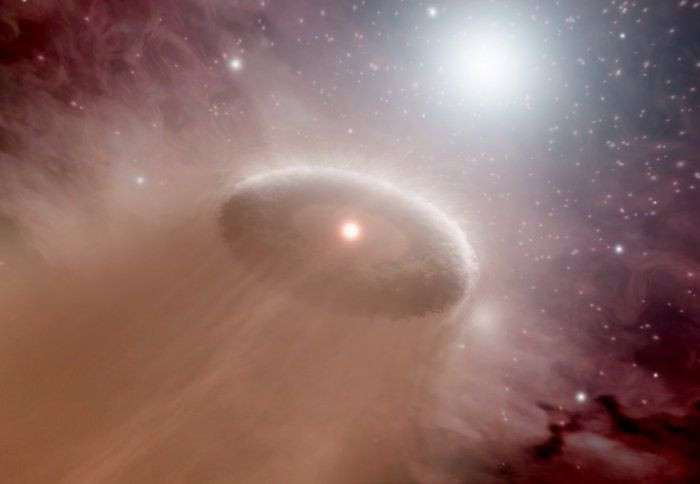How Do Planets Form? Even Weak Stars Can Evaporate Material From Nearby Protoplanetary Disks

Planets, like stars, need some peace and quiet to form. In order to understand how planets are born, astronomers are constantly on the lookout for young stars surrounded by a circumstellar disk, which, given time, can evolve into protoplanetary disks.
One such protoplanetary disk surrounds the sun-like star IM Lup, and observations of this disk have now provided fresh insights into factors that can affect the formation of planets around stars. The observations have revealed that, contrary to expectations, even a relatively small star located close to another star’s protoplanetary disk can crimp the formation of planets.
Read: Astronomers Estimate Protoplanetary Disk Dust Particle Size
Until now, scientists thought that only a larger star was capable of evaporating parts of the protoplanetary disk of smaller counterparts.
“Because the light shining on this disc is so much weaker than that shining on known evaporating discs, it was expected that there would be no evaporation. We have shown that actually these stars can evaporate a significant amount of material,” Thomas Haworth from Imperial College London, who was part of the team that made the observations, said in a statement released Wednesday.
In this particular case, the light from the star near the IM Lup system is about 10,000 times weaker than that of stars usually seen stripping protoplanetary disks. The researchers’ calculations, described in a study published in the latest edition of the Monthly Notices of the Royal Astronomical Society, suggest that IM Lup’s protoplanetary disk will, over its 10 million year lifetime, lose about 3,300 Earths worth of material.
This means that if the disk started out with a radius of 700 astronomical units (1 AU, or the distance between Earth and sun, is about 93 million miles), it would halve in size in the first million years of its life. IM Lup, which is still less than a million years old, is currently surrounded with a 400 AU-wide disk.
“This result has consequences if we want to understand the diversity of exoplanet systems that are being discovered,” Haworth said. “This phenomenon could significantly affect the planets that can form around different stars. For example, light from nearby stars could limit the maximum size a solar system can be.”
© Copyright IBTimes 2024. All rights reserved.






















